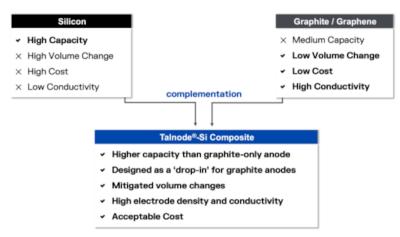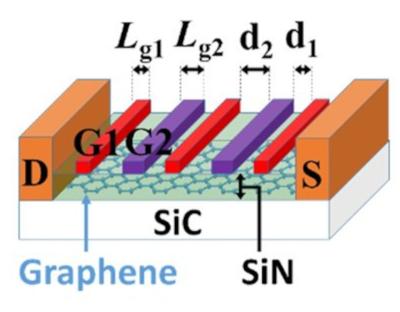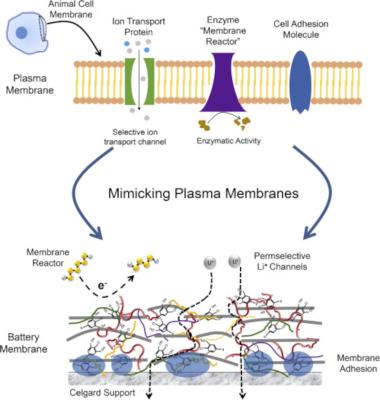The Graphene-Info weekly newsletter
Published: Tue, 12/20/22
The Graphene-Info newsletter (December 23, 2022)
Cannot read this? View it online here
Researchers examine the influence of graphene oxide on gut microbiome and the immune system
Researchers from the Karolinska Institute in Sweden and the Catalan Institute of Nanoscience and Nanotechnology (ICN2) in Spain have found that oral exposure to graphene oxide (GO) modulates the composition of the gut microbiome in adult zebrafish and can influence the crosstalk between the microbiome and immune system.
"This shows that we must factor the gut microbiome into our understanding of how nanomaterials affect the immune system," said the paper's corresponding author Bengt Fadeel, professor at the Institute of Environmental Medicine, Karolinska Institutet. "Our results are important for identifying the potential adverse effects of nanomaterial and mitigating or preventing such effects in new materials."
First Graphene and University of Manchester secure funding to advance graphene-enhanced supercapacitor material
First Graphene has announced it has secured grant funding, in conjunction with the University of Manchester (UoM), for the next stage of research into commercializing graphene-enhanced supercapacitor materials.
Awarded through Innovate UK’s “Accelerated Knowledge Transfer to Innovate” scheme (AKT2I),
the grant will be used to fund a project intended to accelerate development and optimization of a
graphene-metal-oxide slurry for manufacturing high energy density supercapacitors.
Talga updates on anode material testing results and plant expansion plans
Talga Group has provided an update on commercialization and customer qualification of Talnode®-Si, the Company’s proprietary silicon anode product for lithium-ion (Li-ion) batteries. Talnode®-Si is a composite of graphite, graphene and ~50% silicon designed to significantly boost battery energy capacity when blended into existing commercial graphite anode materials.
Talga has been developing Talnode®-Si since 2018 at its facilities in Cambridge, UK, with commercial samples being produced at its pilot facility in Rudolstadt, Germany.
Researchers use liquid gallium-oxide to protect graphene devices
Researchers from Monash University, The University of Melbourne and RMIT University have shown a surprising way to protect atomically-thin electronics – adding vibrations, to reduce vibrations.
By ‘squeezing’ a thin droplet of liquid gallium, graphene devices are painted with a protective coating of glass, gallium-oxide. This oxide is remarkably thin, less than 100 atoms, yet covers centimeter-wide scales, making it potentially applicable for industrial large-scale fabrication.
China startup Caiqi New Materials announced plans to mass-produce graphene supercapacitor material
Reports suggest that Chinese startup Caiqi Xin Cailiao (Caiqi New Materials) is preparing to mass-produce graphene materials for supercapacitors, in the near future.
According to these reports, Caiqi has already completed mass production trials and a fundraising round of about 10 million yuan ($1.4 million).
Graphenea launches specialty chemical spin-off KIVORO
Graphenea has launched a specialty chemicals spin off, called Kivoro. The new company will be focused on creating solutions for industrial challenges.
Graphenea will continue to operate as a graphene producer, with Kivoro taking lead on applications development in various industries like composites, construction, and more.
Graphene transistor enables high-speed, high-sensitivity terahertz detection
Researchers from Japan's Tohoku University and RIKEN have successfully detected terahertz waves with fast response and high sensitivity at room temperature.
On the electromagnetic spectrum, which comprises everything from radio waves to X-rays and gamma rays, there is a deadzone where conventional electronic devices can hardly operate. This deadzone is occupied by terahertz waves. With wavelengths of approximately 10 micrometers to 1 millimeter, terahertz waves are unique amongst electromagnetic waves. Their vibration frequency overlaps with the molecules that make up matter, and they allow for the detection of substances, since almost every molecule operating in the terahertz band has a fingerprint spectrum. Technologies capable of harnessing the power of terahertz waves could have massive significance for the development of spectroscopy, imaging, and 6G and 7G technologies.
Researchers create cell plasma inspired rGO membranes for LiS batteries
Researchers from Australia's Monash University and CSIRO Manufacturing have designed a permselective membrane based on reduced graphene oxide (rGO) for making practical lithium-sulfur batteries.
The membrane closely mimics a cell plasma membrane, demonstrating selective Li+ transport and the ability to not only retain polysulfides, but also 're-activate' them on the membrane's electrochemically active interface. The team used the membrane to demonstrate high loading and high rate Li-S batteries, also on a pouch cell level.
Researchers discover how "explosive percolation" turns GO paint extremely conductive
University of Sussex scientists, along with teams from Spain's Instituto de Carboquímica (ICB-CSIC) and Instituto de Nanociencia de Aragon (INA), UK's University of Brighton, France's Institut des Materiaux Nantes Jean Rouxel and Rice University in the U.S, have demonstrated how a conductive paint coating that they have developed mimics the network spread of a virus through a process called 'explosive percolation'—a mathematical process which can also be applied to population growth, financial systems and computer networks, but which has not been seen before in materials systems.
The process of percolation—the statistical connectivity in a system, such as when water flows through soil or through coffee grounds—is an important component in the development of liquid technology. And it was that process which the research group was expecting to see when they added graphene oxide to polymer latex spheres, such as those used in emulsion paint, to make a polymer composite. However, when the team heated the graphene oxide to make it electrically conductive, the scientists kick-started a process that saw this conductive system grow exponentially, to the extent that the new material created consumed the network, similar to the way a new strain of a virus can become dominant.
Haydale launches graphene-enhanced prepreg that extends tool life over 100%
Haydale has launched its graphene-enhanced prepreg after extended field trials more than doubled the manufacture of composite parts.
Using Haydale's HDPlas technology, functionalized graphene is added to high performing tooling epoxy resin and then pre-impregnated onto a suitable carbon fiber reinforcement for use in tool manufacture. The graphene-enhanced epoxy prepreg tooling material is designed to deliver cost-efficient composite tooling with extended tooling life, improved surface quality and enhanced thermal conductivity.
Metalgrass LTD
9 Har Tsin St.
Kfar Sava Hasharon 4430809
ISRAEL
Unsubscribe | Change Subscriber Options







